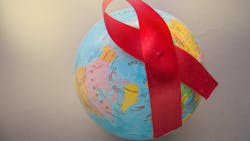PEPFAR program has transformed HIV treatment around the world
A new analysis from the Centers for Disease Control and Prevention reveals that the number of people receiving lifesaving HIV treatment through PEPFAR has increased 300 times in under 20 years, from 2004 to 2022. The number of people receiving HIV antiretroviral therapy (ART) through PEPFAR increased from just 66,500 individuals in 2004, the year after PEPFAR was launched, to more than 20 million people in 2022. These findings are published in today’s Vital Signs report.
The percentage of people receiving HIV treatment through PEPFAR with a viral load test who subsequently tested as virally suppressed also increased from 80 percent to 95 percent between 2015 and 2022, the report notes. Viral suppression refers to people living with HIV who have their virus under control, thanks to treatment. This can prevent transmission of HIV to sexual partners and helps reduce the risk of transmission from mothers to children.
“PEPFAR’s efforts have dramatically altered the course of the global HIV epidemic,” said CDC Chief Medical Officer Debra Houry, M.D., M.P.H. “We must continue to build on this momentum if we are to eliminate HIV as a global public health threat by 2030. These investments are saving lives and creating a safer world for us all.”
As a key implementing agency of PEPFAR, CDC works side-by-side with partners on the ground in more than 50 countries to improve methods for finding, treating, and preventing HIV. CDC supports more than 10,000 labs or testing sites worldwide, providing lifesaving treatment to people with HIV around the world and designing and enhancing surveillance systems to enable countries to understand which geographic areas require urgent HIV-related services.
Researchers also analyzed findings from large CDC-supported household surveys in six African countries severely affected by HIV and found increases in population viral load suppression rates between 2015 and 2021. These surveys showed that viral load suppression rates among the population improved in Eswatini, Lesotho, Malawi, Uganda, Zambia, and Zimbabwe. These increases in suppression rates ranged from a 13 percent increase in Lesotho to a 19 percent increase in Malawi.
Under PEPFAR’s current five-year strategy, the United States aims to eliminate HIV as a global public health threat by 2030 while strengthening public health systems worldwide. The latest data in this Vital Signs report show that PEPFAR’s programs are placing the world on the path to achieving this goal and validate that efforts over the past 20 years have transformed the global HIV epidemic.
The study also reveals that since its inception, PEPFAR’s efforts have helped countries effectively respond to their HIV epidemics and strengthened their public health systems, which helps keep the world safe from other global health threats. As a key implementation agency of PEPFAR, CDC has played a critical role at each step:
- · Of the more than 20 million people living with HIV on PEPFAR-supported ART worldwide, CDC and its partners are responsible for supporting treatment for the majority of these individuals—62 percent as of September 2022.
- · CDC has been at the forefront of PEPFAR’s efforts to strengthen health systems, maximizing its long-standing relationships with ministries of health and local partners to strengthen laboratory systems, train and support healthcare workers, and enhance disease monitoring systems. These efforts are helping countries improve their responses to HIV while also helping them prepare for future health threats.
- · Through PEPFAR, CDC is also helping partner countries worldwide control their epidemics. For example:
o In Uganda, one of the first countries supported by PEPFAR, efforts to expand lifesaving HIV treatment have prevented over 600,000 deaths related to HIV and nearly half a million HIV infections since 2004.
o From 2011 through 2016, Eswatini’s rate of new HIV infections was cut nearly in half, and its national rate of HIV viral load suppression doubled.
o In Nigeria, the number of people newly diagnosed with HIV who started treatment increased eightfold in just 18 months—even amid the COVID-19 pandemic.
Despite these tremendous achievements, several groups still lag behind—likely due to health inequities fueled by many factors, including stigma and discrimination.
- · The report shows that while viral load suppression rates have reached 95 percent overall, certain groups—including individuals who are pregnant and breastfeeding, children, adolescents, and people living in prisons—have yet to achieve comparable rates.
- · The data also show lower population viral load suppression rates among men compared to women and lower rates among younger people when compared to older people.
More than four decades since the first cases were reported, HIV is still one of the leading causes of death and a health threat to millions worldwide. Significant gaps remain in global efforts to reach certain groups with critically needed HIV treatment and prevention services, including youth, men, and key populations.
To eliminate HIV as a public health threat by 2030, as outlined by PEPFAR’s five-year strategy, the global health community must:
- · Sustain efforts and investments: Continue to be unrelenting in efforts to build on these achievements or risk reversing decades of progress.
- · Advance health equity: Address health inequities head on.
- · Strengthen health systems: Continue to bolster and use PEPFAR platforms to strengthen global health security.
- · Build transformative partnerships: Collaborate and harness the shared commitment to end the global HIV epidemic.





